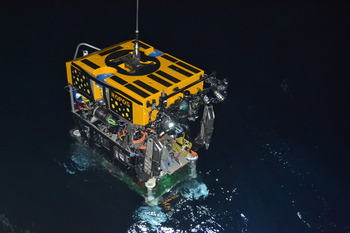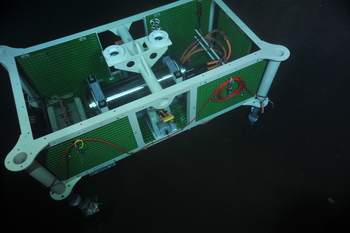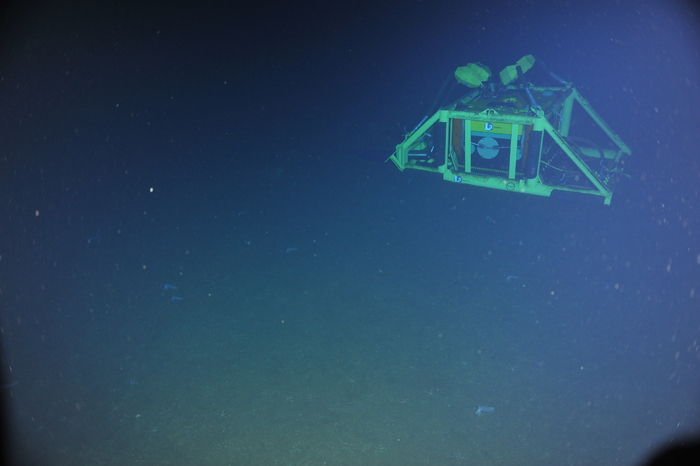- Visions18
- Visions17
- Visions16
- Visions15
- Visions14
- Construction
-
Visions13
- Leg 4 Team Returns to Seattle
- Arrived in Victoria BC
- Operations Complete
- Success During the OOI-NSF VISI ...
- Days Flying By
- First Complete Installation at ...
- Back to Axial Volcano
- Installing Caissons and Conduct ...
- Beginning Leg 4
- End of VISIONS '13 Leg 3
- Poetry Night on Leg 3
- Cable Route Planning
- Working at the Vents Again
- Earthquake Data!
- Overcoming Challenges
- Diving at Axial
- Transition: Leg 2 to Leg 3
- Wiring a Volcano
- Laying Cable at the Summit of A ...
- First Live Data From the Seaflo ...
- Installing the First Extension ...
- Our First Look at Primary Node ...
- Laying the first Extension Cabl ...
- Weathering Delays
- Site Verifications at Hydrate R ...
- Successful Testing of Primary N ...
- Starting Work at Axial Volcano
- Thompson Sets Sail for VISIONS ...
October 2013
August 2013
July 2013
June 2013
- Visions12
- Visions11
- Enlighten

ROPOS goes into the water in the early morning of July 10, prior to descending 2600 m (~7800 ft) to the seafloor. Directly latched below the vehicle is the medium-powered junction box, MJ01A.
Photo credit: NSF-OOI/UW/CSSF

A medium power Junction Box (MJ01A), was deployed on July 10 near Primary Node 3B at the base of Axial Seamount. These junction boxes, when fully deployed next summer and connected to the Primary Nodes, will provide power and communication to instruments at specific monitoring sites such as the ASHES and International Vent fields, and at geophysical monitoring sites in the caldera.
Photo credit: NSF-OOI/UW/CSSF
In the wee hours of the morning (July 10), we got our first look at Primary Node 3B since its installation by L3 MariPro in the summer of 2012. On deck, ROPOS latched into the secondary junction box, MJ01A, and under calm seas the ROV descended with it, safely latched to its underbelly to a depth of 2609 m beneath the oceans surface. The J-Box, was deployed on the seafloor 50 meters away from the Primary Node and then ROPOS flew over to the Primary Node to get our first glimpse. This Primary Node, is located at the base of Axial Volcano and will support two instrumented water column moorings next year that rise ~2600 m into the overlying ocean, as well as geophysical sensors to provide real-time detection of earthquakes far field, as well as more local earthquakes associated with migration of melt deep within the volcano. On the follow-on dive (Dive 1599), ROPOS will deploy ~ 600 m of cable from PN3A to the site where a secondary node, geophysical sensors, and the moorings will be deployed next year.


